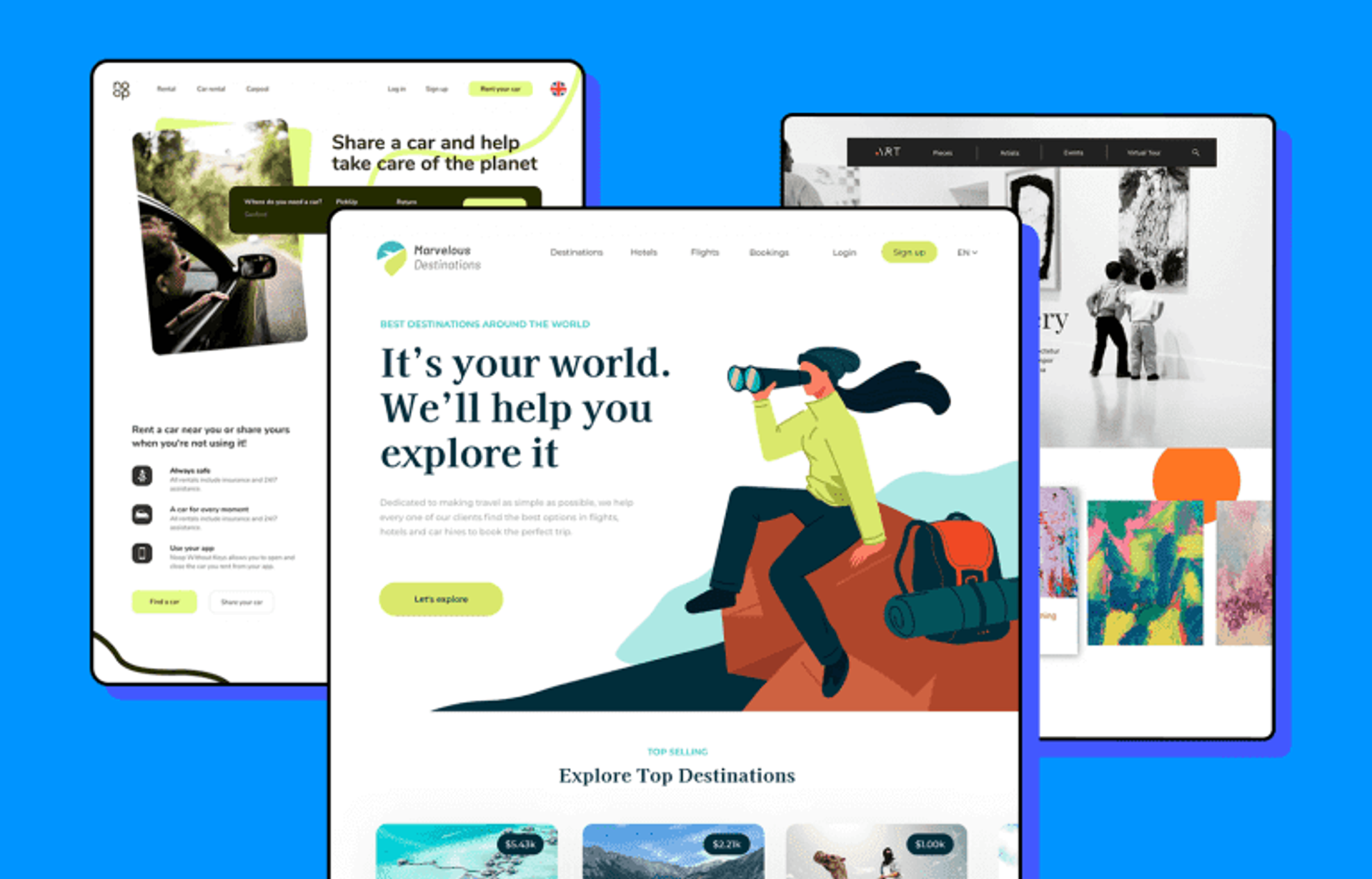Boost your digital presence by hiring expert web developers for small businesses.
Produce a Balanced Online Experience With Holistic Website Design
In today's digital landscape, creating a balanced online experience with alternative web style is necessary for fulfilling the varied demands of individuals. By prioritizing availability and lining up material approach with customer choices, organizations can substantially improve involvement.
Recognizing All Natural Website Design
What does it suggest to adopt a holistic approach to website design? An all natural technique highlights the combination of different aspects to produce a cohesive online experience. This technique takes into consideration not just aesthetic elements but additionally performance, usability, and the psychological impact of the website on its customers. By watching an internet site as an interconnected ecological community, developers can make sure that every component-- aesthetic layout, material, navigation, and interactivity-- functions harmoniously to fulfill customer requirements.

Including an alternative viewpoint includes recognizing the target audience and their certain requirements, preferences, and habits. It requires an analysis of just how users engage with various elements of the website and exactly how these communications influence their total experience. This approach likewise takes into consideration the wider context in which the internet site operates, including brand name identification, marketing techniques, and affordable landscape.
Inevitably, an alternative method to internet layout results in a more appealing and efficient on-line visibility. By prioritizing the user journey and promoting a smooth experience throughout all touchpoints, developers can develop internet sites that not only capture interest but likewise motivate sustained interaction and satisfaction. This extensive method advertises lasting success and cultivates brand name commitment.
Trick Concepts of Individual Experience

One vital concept is usability, which highlights the relevance of simple navigation and clear functionality. Web sites need to be very easy to navigate, enabling users to find information quickly. This is closely linked to consistency, where layout aspects, such as buttons and food selections, need to stay uniform throughout the website to enhance experience and ease of usage.
Another substantial concept is feedback, making certain that users are educated about their communications. Whether with aesthetic hints or alerts, comments reinforces a sense of control and complete satisfaction. In addition, the principle of power structure dictates that info should be organized practically, directing customers via content properly.
Last but not least, psychological design plays a critical role in UX. By evoking favorable feelings through appearances and interactions, designers can produce memorable experiences that promote customer commitment - website development consulting. By adhering to these principles, web developers can develop alternative experiences that resonate with users and accomplish their objectives
Importance of Availability
Access is a crucial element of website design that ensures all individuals, no matter their abilities or impairments, you can try these out can engage with electronic web content successfully. By focusing on access, internet developers develop comprehensive environments that accommodate diverse individual requirements, improving overall user experience.
An easily accessible web site abides by developed guidelines, such as the Web Content Ease Of Access Guidelines (WCAG), which recommend techniques like providing message choices for non-text web content, making sure adequate color contrast, and enabling keyboard navigating. These techniques not only serve users with disabilities, such as aesthetic or auditory disabilities, but also profit other user teams, consisting of those with situational restrictions or older adults.
Moreover, the relevance of access prolongs beyond moral factors to consider; it also impacts organization results. An inclusive internet site can reach a broader target market, eventually resulting in increased involvement and conversions. Furthermore, accessibility conformity minimizes the risk of lawful effects associated to discrimination.

Integrating Material Method
Creating an inclusive digital environment naturally leads to the necessity of a robust material approach that straightens with user requirements. A reliable content technique acts as the foundation of all natural website design, making additional resources sure that details is not just accessible but likewise appealing and appropriate. It needs a deep understanding of the target audience, including their choices, behaviors, and potential barriers to access.
To integrate a web content strategy efficiently, companies have to prioritize user-centric content creation. This can be achieved through comprehensive audience research study, which educates the sorts of content that will certainly resonate with customers. Furthermore, web content must be structured rationally, utilizing clear headings, bullet points, and concise language to enhance readability.
Regular audits of material effectiveness will help in refining methods, ensuring the web content remains fresh and lined up with user expectations. By prioritizing a natural material approach, organizations can produce a well balanced online experience that fosters interaction and accessibility for all customers.
Measuring Success and Interaction
While a well-executed web content technique develops the structure of holistic web design, determining success and engagement is vital for assessing its efficiency and assisting future renovations. Key performance indications (KPIs) such as page views, bounce rates, and typical session period provide quantitative insights into individual actions. These metrics highlight which web content reverberates most with users and where potential friction factors might exist.
Furthermore, qualitative measures, such as customer responses and studies, can use deeper insights right into customer contentment and interaction levels. Tracking social media communications and conversion prices likewise assists assess the performance of material in driving desired activities, whether that be purchases, sign-ups, or information demands.
Using tools like Google Analytics, heatmaps, and A/B testing can improve understanding of user communication patterns and preferences. This data makes it possible for internet developers and content planners to iterate on their layouts, making sure that the online experience continues to be user-centered and lined up with company objectives.
Verdict
By prioritizing individual requirements and ease of access, developers can create interconnected communities that improve involvement and satisfaction. A well-aligned material method better adds to a natural customer experience, while consistent feedback mechanisms are vital for cultivating commitment.